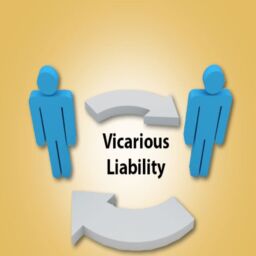INTRODUCTION
Trespass simply means the intrusion into someone else’s property without his/her permission to unlawfully enter. The unlawful entrance into someone’s aerial space in essence the air column above his/her owned land is known as aerial trespass. The owner of the land is empowered and entitled to the column of airspace above his/her owned surface under the principle of property law, ‘Cuius est solum, eius est usque ad coelum et ad inferos’[1] which refers to that not only the possessor of land owns it on surface but also the air above and the ground below. The ‘usque ad coelum’ part means up to the heavens. But throughout years through many cases the concept of aerial trespass has been mended.
The principle of usque ad coelum is an overstatement, at least in modern times. While judging the landmark case of ‘Bernstein of leigh (Baron) v skyviews & general ltd.’ [2] the correct view of the principle of owning the air above and land below of your owned property was determined. The case of ‘Bernstein of leigh (Baron) v skyviews & general ltd.’ came up with the definition that the owner’s right to air and space above his owned piece of ‘earth’ is reduced to such a height as is necessary or required for the general utilisation and recreation of his owned surface and the structures & buildings built on his land. The ‘Bernstein of leigh (Baron) v skyviews & general ltd.’ was judged & It was held that if previously followed rules of owning the whole spectrum of air and land below the owned patch of land were to be used, it would turn into the act of a trespass being committed every single time a satellite passes over any resident’s garden.
Another such example could be the ‘Wandsworth Board of Works v United Telephone Co.’ [3] where it was held that any common proprietor can cut and remove a wire placed at any height above his owned land. This case came up with the feeling that this principle of ‘Cuius est solum, eius est usque ad coelum et ad inferos’ is becoming an overstatement and will pose issues in the upcoming future. In the case of Ambadass v Dattatraya (1944) it was held that if a man were to erect a building overhanging the land of another person, he/she would commit trespass and the action would lie against him.
Advertisement signs have always been scrutinised by this principle. In the case of Kelson vs Imperial Tobacco Co Ltd. (1957)[4]. The accused person was the owner of the land where he worked for his tobacco company. He gave out a portion of space of the buildings for rent to the plaintiff, through which he operated a tobacco business and rented a house. The issue here was that the offender stood up a billboard and it entered the plaintiff’s air column by 4 inches. It was held that the projection of the billboard into the plaintiff’s airspace was a trespass and not just a mere nuisance, and it was a proper case of trespass which demanded the grant of mandatory injunction. Although in the case of Armstrong v Shepphard and Short Ltd. (1959)[5] The scope of the accused’s powers given over the plaintiff’s property, the possibility of an injunction, and the amount of potential damages were mostly the problems throughout this case. The judgement came up with no injunction.
The common question which arises due to the concept of usque ad coelum in the principle is that is the moving of an airplane above your owned land a trespass of your property and is it worth collecting the damages. In the case of ‘Bernstein of leigh (Baron) v skyviews & general ltd.’ It was held that any aircraft passing at a reasonable height which does not affect the comfort of his land and structures does not count as an aerial trespass. Statutes have also been enacted to clarify this law.
Under the Civil Aviation Law, 1949[6] no action can lie with respect to the trespass by the sole reason of flight of any aircraft over any piece of land at an altitude well above ground that is reasonable in light of the wind speed, climate, and other variables in the situation or of the ordinary incidents of such flight so long as certain provisions of the Act or any order made thereunder are observed. The Civil Aviation law also clearly stated that if any person suffers material loss or damages to himself or his property which is present on the surface or water by, or by a person in, or from any object dropping from the aircraft while it is in flight, taking off or landing, then unless the damages, harm or loss is due to the plaintiff’s negligence, he/she can claim the aforementioned damages without providing any evidence or proof of negligence or intention or any other cause of action as if the loss or damages had been caused willingly.
The Civil Aviation Act expelled all the aircrafts which are in the service of Her Majesty [7]. There is also the ‘Indian Aircraft Act 1934’ [8] section 17 which deals with the Indian statute-law-aerial trespass or nuisance. This ‘Indian aircraft Act 1934 Section 17’ provides the understanding no action must be taken in respect of trespass of airspace or nuisance, by reason only of flight of aircraft over any property at a height above the ground which have regard to wind, weather and all the other reasonable circumstances, or by the reason only of the ordinary incidents of such flight. But the Indian Aircraft Act 1934 states that if someone wilfully flies with the intention to cause harm to the land or structures of the owner he/she may be rebuked with a jail time of 6 months or there can be a monetary fine of 1000 rupees or with both. Therefore the act of trespass is a severely diverse act but the airspace is, although under principle owned by the person owning the land below, due to advancements in the society, is a free space to move without causing any harm or damage to the residents and people below. The concept of trespass law must be clarified in the future too as flight is the future.
CONCLUSION
The theory of trespass as a whole let it be land, air or water is still smudgy. Therefore the act of trespass is a severely diverse act but the airspace is, although under principle owned by the person owning the land below, due to advancements in the society, is a free space to move without causing any harm or damage to the residents and people below. The concept of trespass law must be clarified in the future too as flight is the future.
Author(s) Name: Dikshant Sharma (Himachal Pradesh National Law University Shimla)










